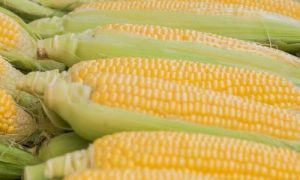White maize supplies remain a critical upside risk to SA’s food price inflation

South Africa’s Crop Estimates Committee projects a 21% drop in 2023/24 summer crop production, with maize output down 19%. Despite lower yields, maize exports may meet domestic demand. Soybean harvest is forecasted 36% lower, possibly leading to imports. Sunflower seed yields affected by dryness, while groundnut, sorghum, and dry bean production see slight increases. Although drought impact on farming remains uncertain, global grain supplies may mitigate food price inflation risks.
Iappreciate that the minds of many South Africans are on the election outcome matters, but food matters remain vital. Reflecting on the Crop Estimates Committee’s forecasts released at the end of May for the 2023/24 summer crop production season is valuable.
This is a fourth production estimate for the season, and the harvest is under way across South Africa so we may put more weight on the accuracy of this figure than our tentative view in the previous estimates.
The Crop Estimates Committee places South Africa’s 2023/24 total summer grains and oilseed production forecast at 15.9 million tonnes, down by 0.5% from the previous month’s forecast and 21% lower than last season’s harvest.
Maize
A closer look at the data shows that the white and yellow maize harvest could be 6.4 million tonnes (down by 0.9% m/m) and 6.9 million tonnes (down by 0.3% m/m). These revisions place the total maize production estimate at 13.3 million tonnes (down by 0.6% m/m).
When viewed annually, the white maize harvest is down by 25%, with yellow maize down by 13% from the 2022/23 season. The expected harvest of 13.3 million tonnes is down by 19% from the 2022/23 season. This harvest would meet South Africa’s annual maize consumption of roughly 12 million tonnes, leaving the country with more than a million tonnes for exports.
With that said, maize prices are likely to remain elevated for some time because of potentially tighter supplies later in the season. Admittedly, in recent weeks, white and yellow maize prices have moderated from the levels we saw last month because of the harvest pressure, among other factors.
Still, at the end of May, white maize prices were roughly 30% higher than levels we saw a year ago, with yellow maize prices up by approximately 7% from a year ago. The white maize spot price hovers around R5,000 per tonne today, while the yellow maize spot prices are around R4,000 per tonne.
Yellow maize prices have not increased much, as imports could make the supply risk manageable. There are ample maize supplies (yellow) in the world market. The International Grains Council forecasts the 2023/24 global maize harvest to be 1.2 billion tonnes, up by 6% year on year. A majority of this expected global maize is yellow.
The stocks are also robust, thus keeping the international yellow maize prices moderate. This also partly explains the relatively mild increase in yellow maize prices compared with the surge in white maize prices, which is scarce in the world market and primarily produced in southern Africa and Mexico.
Oilseeds
The 2023/24 soybean harvest forecast was lowered by 2% from last month to 1.7 million tonnes (down by 36% y/y). This annual decline results from lower yields in various regions of South Africa. We now believe that, unlike last season, South Africa may not play a robust position in soybean exports. If anything, soybean oilcake imports this new season are now a possibility.
Meanwhile, the sunflower seed harvest estimate was again lifted from last month, by 6% to 649,250 tonnes (down by 10% y/y). The area plantings are moderately down from the previous year, which means the primary driver of the annual decline in the harvest is the expected poor yields, especially as most of South Africa’s sunflower seed is planted in the western regions, which experienced dryness and heatwaves in February and March.
Other grains
The 2023/24 groundnut harvest estimate is 54,440 tonnes (up by 3% y/y), sorghum is at 95,830 tonnes (up by 2%), and dry beans are at 52,190 tonnes (up by 4%).
Conclusion
The current production data illustrate the scale of damage caused by the mid-summer drought to the South African agricultural sector. The complete scale of the financial impact of this drought on the farming businesses is yet to be clear.
Still, from a consumer perspective, South Africa is not in a crisis, in our view. The recent drought presents upside risks to food price inflation but not the overall basket. The challenge is primarily white maize, especially considering the potentially more robust regional demand later in the year.
The favourable supplies of other grains in the world market, mainly yellow maize (also rice and wheat), and the moderating prices mean South Africa could be slightly cushioned in these commodities.
Still, the exchange rate will be necessary to monitor when assessing the possible imports of wheat, palm oil and rice into South Africa.

















